Water News: What’s Ahead in 2013
Drought, water disputes, debates about energy development — “more of the same” is what to expect this year.
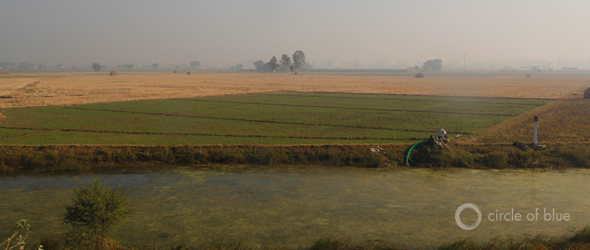
By Brett Walton
Circle of Blue
The new year often promises new beginnings. But for water issues, 2013 looks to be remarkably similar to the year that just ended, especially in the United States, where farmers, cities, and energy companies will haggle over tightening supplies of water.
Last year’s U.S. corn crop promised to be the largest ever. Instead, the country’s worst drought since the 1950s caused yields to plummet to 1995 production levels, and federal climate predictions show no signs of the drought abating. Rather, food prices will begin to tick up by a few percentage points, as the costs of last year’s lower farming output work their way through the U.S. supply chain. Additionally, low water levels will continue to wreak havoc for shipping companies in the Great Lakes and the Mississippi River, which might soon close to barge traffic near St. Louis.
In Congress, cornerstone pieces of federal legislation — the farm bill, the water resources development bill — that were supposed to be hammered out in the previous session are still on the docket, as is a debate about what share of the damage from Superstorm Sandy will be borne by U.S. taxpayers and how the affected communities should prepare for future storms.
Internationally, water will again have marquee status. The United Nations christened 2013 the “Year of Water Cooperation.” This comes during a decade (2005-2015) that the U.N. has labeled “Water for Life,” which itself follows a 10-year period in the 1980s when water and sanitation received top billing.
Speeches, pleas, and gala events are already planned to mark the U.N. designation, but behind the scenes a few water advocates are hopeful that 2013 will be the year that a convention for managing rivers that cross international borders finally comes into force. The U.N. General Assembly passed the convention 16 years ago, but ratifications have increased recently, thanks to lobbying by the World Wide Fund for Nature (WWF).
This might also be the year that another water-related convention garners enough support to become legally binding: the Ballast Water Convention, sponsored by the International Maritime Organization, still needs a few countries with large shipping industries to sign onto the treaty, which seeks to prevent the spread of aquatic organisms through the water that ships use to balance their loads.
Moving Dirt (And Water)
Though some waternews stories depend on the whims of weather, a few events run on a more predictable timetable, as several big infrastructure and mining projects will either break ground or start production in 2013.
For instance, Jordan’s capital city, Amman, will open the taps on a 325-kilometer (200-mile) pipeline from the Disi Aquifer in the country’s far south.
A far grander water supply scheme will open in China, where government officials will inaugurate the 1150-kilometer (715-mile) eastern route of the massive South-North Water Transfer Project. The series of pipelines and canals will deliver 14.8 billion cubic meters (3.9 trillion gallons) of water a year from the Yangtze River Basin to the dry northern provinces.
China’s neighbor, Mongolia, will welcome its own behemoth. The Oyu Tolgoi mine, one of the world’s largest stores of copper, will begin commercial production in the first half of 2013. Mongolia’s mining boom, which includes several projects in the southern Gobi Desert, will place it near the top of global rankings for economic growth this year, but it has also brought concerns about water pollution and water availability.
In the United States, construction will begin on a desalination plant in southern California’s Carlsbad. When finished, it will be the nation’s largest.
Water and Energy
In Texas, a portion of the 2013 legislative session will be dedicated to water. The state water plan, published last year, said that the demand for water will increase 22 percent by 2060. Lawmakers have suggested releasing as much as $US 2 billion for water projects from the state’s “rainy-day” fund, which comes from oil and gas taxes.
But the biggest looming policy and regulatory questions in the United States deal with how to best develop the nation’s new oil and gas bounty. President Barack Obama, after a delay for the election season, will decide whether to approve the northern section of the Keystone XL pipeline, which would funnel oil from Canada’s tar sands to refineries along the Gulf of Mexico. The pipeline is needed because it is difficult to move oil from the heart of Canada to global markets.
A similar scenario is playing out with American coal. Wyoming’s Powder River basin is the center of U.S. coal production, but to get the product to the customer — increasingly China — new export terminals must be built on the West Coast. Hearings and environmental studies will continue for proposed terminals in British Columbia (also being considered for a pipeline from Alberta’s tar sands), Oregon, and Washington state.
The U.S. Department of Interior will finalize regulations for hydraulic facturing for natural gas on public lands this spring, and the Obama administration will submit a policy for exporting natural gas from in condensed, liquefied form (LNG). States, rather than the federal government, are largely in charge of regulating hydraulic fracturing, or fracking. California and Alaska are now considering draft regulations, and New York state, which has had a moratorium on natural gas drilling since 2010, will complete its own set by spring.
Meanwhile, taking a cue from the 1979 film The China Syndrome, actor and director Matt Damon is using Hollywood star power to bring the risks of new energy developments — nuclear power then, fracking for natural gas now — to the big screen in The Promised Land, already playing nationally. Audiences, however, have ignored the film; it took in just $US 4 million in its opening weekend.
Other parts of the world will be looking at a different kind of energy development — hydropower.
The world’s tallest dam is being planned in Tajikistan, despite protests from downstream Uzbekistan, but construction of the Soviet-era Rogun Dam has been suspended so that the World Bank could assess the project’s social, environmental, and economic merit, in addition to its technical feasibility. Those reports will be completed this year.
More large dams will be built in India, Africa, and Southeast Asia. In an email, Peter Bosshard of International Rivers, an environmental protection group, told Circle of Blue that several dams on China’s Lancang and Nu rivers are being constructed without final governmental approval. They will need to be sanctioned or stopped, he wrote.
Reports and Assessments
And what would a year be without the bevy of reports and studies for context and analysis?
The U.S. National Climate Assessment, published every four years, will be submitted to Congress later this year. Federal scientists will preview the report at the American Association for the Advancement of Science meeting in Boston in February.
Likewise, the U.S. Environmental Protection Agency (EPA) will submit its four-year report to Congress on the money needed to meet the nation’s clean water needs. And by the end of the year, the Army Corps of Engineers will reveal its options for keeping aquatic invasive species, such as the Asian carp, from moving between the Mississippi River Basin and the Great Lakes.
India’s federal government – having received a stamp of approval from state governments on a new national water policy in the waning days of 2012 – will work out the details of a framework law to regulate surface water and groundwater.
In September, the U.N.’s top climate group, the Intergovernmental Panel on Climate Change, will release the first of several reports evaluating the state of climate change. The first report looks at climate science. The U.N.’s 19th Conference of the Parties (COP-19) will take place November 11 to November 22 in Warsaw, Poland, where negotiaters will work toward a 2015 climate deal to replace the Kyoto Protocol, certain provisions of which expired at the end of last year.
The Arts
Photojournalist James Balog and his Extreme Ice Survey project, which is documenting the world’s shrinking glaciers, are the subjects of Chasing Ice, a film from director Jeff Orlowski. Chasing Ice, which debuted at film festivals in 2012 and is now in limited theatrical release, testifies to the thermal changes swaddling the world.
In the Great Lakes region, photographer Ed Wargin’s Freshcoast Project is capturing the lakes on film before film goes extinct.
In New York City, the folks behind the Water Tank Project will transform the five boroughs into beacons for water. The team will use the water tanks festooning the city’s buildings as a canvas for water stories.
And prize-winning photographer Edward Burtynsky, who has documented the oil and mining industries, has turned his lens to water, particularly irrigated agriculture. His series, Watermarks, will make the gallery rounds in 2013.
Brett writes about agriculture, energy, infrastructure, and the politics and economics of water in the United States. He also writes the Federal Water Tap, Circle of Blue’s weekly digest of U.S. government water news. He is the winner of two Society of Environmental Journalists reporting awards, one of the top honors in American environmental journalism: first place for explanatory reporting for a series on septic system pollution in the United States(2016) and third place for beat reporting in a small market (2014). He received the Sierra Club’s Distinguished Service Award in 2018. Brett lives in Seattle, where he hikes the mountains and bakes pies. Contact Brett Walton


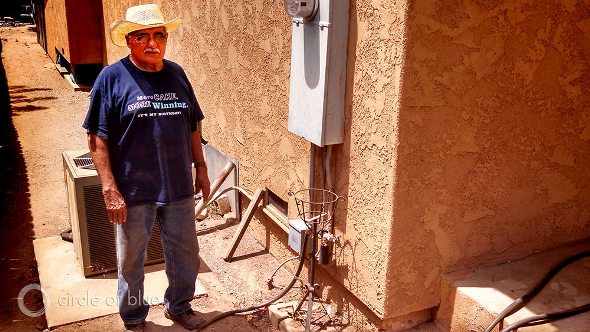
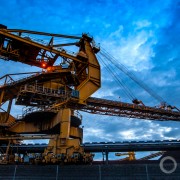
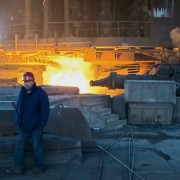
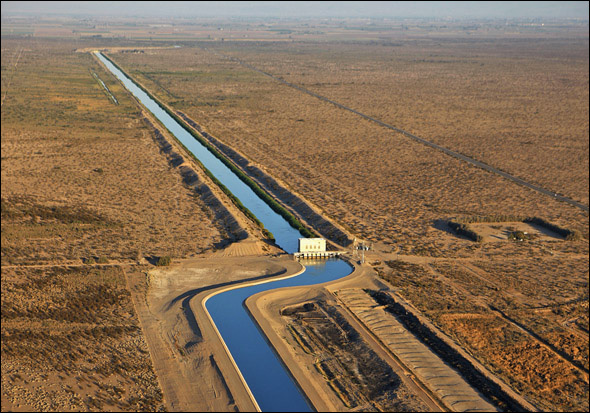
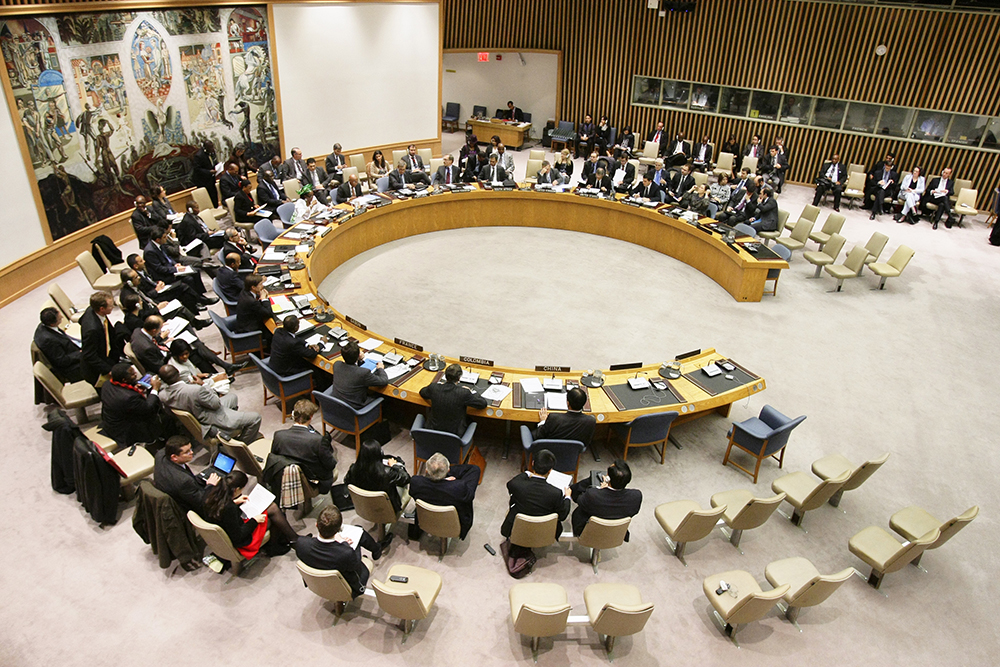



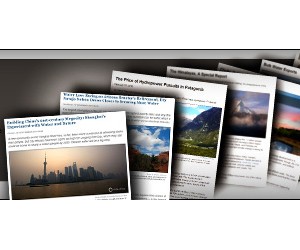
This article takes on a lot of material ranging from crop loss in the United States, federal legislation, UN activity, etc. to Matt Damon and movie premiers. While the article does many things well, there are a flew flaws most of which stem from an attempt to cover too much too quickly.
Pros:
Content- The article does a good job of giving a quick run down of what to look for in 2013 as far as energy and water use is concerned. That seems to be the primary goal and if you are already fairly knowledgable on the subject, this article does a good job. While it strays from what seems to be its focus at times, it does a good job of giving a variety of information and engaging with a wide range of interests. However, I will say, some things seemed too unrelated to be considered a side note (such as the arts section).
Subheads- Dividing the article in to sections was a great decision on the part of the author. It makes the piece flow nicely and reminds readers what it is they will be reading about.
Cons:
Structure- At times the article can be hard to follow. Because so much is covered this is an understandable problem to encounter and I don’t really have suggestions for improvement other than to use subheads more frequently and clearly. For example, at one point the article goes from talking about asian carp in the Mississippi river to India’s federal government. With no transition, this jump left me confused and wanting more on the previous topic. Similarly, Matt Damon and his new film was mentioned under the subhead “water and energy” while it might have been more fitting to place it under “the arts” section. Though I will admit the arts section seemed somewhat out of place in general.
Elaboration- Because there is so much content covered, there is little room for further explanation. While a reader could easily click a link and learn more about a subject they are uninformed about, it would still be nice to have a little bit more background on most of the topics presented in the article. This issue may be because I represent a different audience than Circle Blue generally gears their article to.
Too much material- One of the great things about this article is that it is an overview (something that you don’t see a lot of with topics like this), but even so I think the article takes on too much. Perhaps it would be better focused if it looked at what the US will be facing or what legislation will be coming up this year, etc. The article could be broken up in to several overview articles and might overwhelm readers less in doing so.